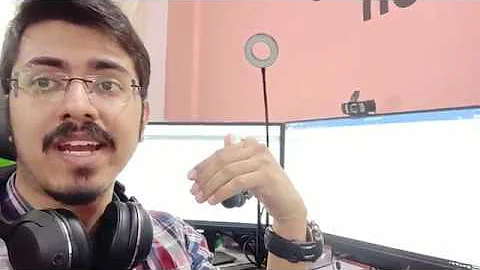Mastering Print on Demand: A Guide to Starting Your Online Store
Table of Contents:
- What is Print on Demand?
- How does Print on Demand work?
- Pros and Cons of Print on Demand
3.1 Pros of Print on Demand
3.2 Cons of Print on Demand
- Product Research for Print on Demand
- Finding Competitors in the Print on Demand Market
- Designing Your Print on Demand Products
- Setting Up Your Print on Demand Store
- Using Printify for Print on Demand
- Setting Up Facebook Ads for Print on Demand
9.1 Tips for Facebook Ads
9.2 Dealing with Facebook Bans
- Analyzing the Results of Print on Demand Campaign
10.1 Tracking Sales and Profitability
10.2 Optimizing Print on Demand Campaigns
- Conclusion
Article: Print on Demand: A Guide to Building Your Online Store
Are you looking for a new venture in e-commerce? Have you heard about print on demand? If not, let me introduce you to this innovative business model. Print on demand is a method of selling products online without the need for inventory. In this article, I will guide you through the process of starting your own print on demand store. From product research to setting up Facebook ads, you will learn the ins and outs of this exciting industry.
1. What is Print on Demand?
Print on demand is an e-commerce business model where you can sell custom-designed products online without keeping any inventory. Instead of stocking up on products and managing shipping and fulfillment, you partner with a print on demand supplier who will handle this process for you. When a customer places an order, the supplier prints the design on the chosen product and ships it directly to the customer. This allows you to focus on designing and marketing your products without the hassle of manufacturing and shipping.
2. How does Print on Demand work?
In print on demand, the process starts with choosing a blank product that you want to customize. It can be a t-shirt, a hoodie, a canvas, or any other item that the print on demand supplier offers. Next, you design or commission a design for your product. This design is then uploaded to your online store. When a customer places an order, the design is printed on the chosen product by the supplier, who then ships it directly to the customer. You never have to handle the products yourself.
3. Pros and Cons of Print on Demand
3.1 Pros of Print on Demand:
- No inventory management: With print on demand, you don't need to worry about stocking up on products or tracking inventory levels.
- Easy customization: You have the freedom to create custom designs for your products, allowing you to cater to niche markets or specific customer preferences.
- Low upfront costs: Since you don't need to invest in inventory, the upfront costs of starting a print on demand business are relatively low.
- Scalability: As your business grows, you can easily add new products and designs to your store without the need for additional investment.
3.2 Cons of Print on Demand:
- Limited control over production: Since you rely on a third-party supplier for production and shipping, you may have limited control over the quality and speed of the process.
- Lower profit margins: Print on demand products typically have higher production costs, resulting in lower profit margins compared to traditional e-commerce businesses.
- Design expertise required: To create successful print on demand products, you need to have good design skills or the ability to hire a designer to create attractive designs.
- Increased competition: Print on demand has gained popularity in recent years, leading to increased competition in the market. Differentiating your store and designs may be challenging.
4. Product Research for Print on Demand
Before diving into the print on demand business, it's essential to conduct thorough product research. You want to find products that have high demand and limited competition. Start by searching for popular print on demand designs on platforms like Printify or browsing through successful print on demand stores. Look for designs that resonate with your target audience and have the potential for high sales volume.
5. Finding Competitors in the Print on Demand Market
To gain a competitive edge in the print on demand market, it's important to research and analyze your competitors. Look for successful print on demand stores that cater to your niche or target audience. Analyze their products, pricing, and marketing strategies. This will give you insights into what works well in the market and help you differentiate your store from your competitors.
6. Designing Your Print on Demand Products
Design plays a crucial role in the success of your print on demand products. Whether you have excellent design skills or choose to hire a designer, it's important to create unique and appealing designs that capture the interest of your target audience. Consider trends, customer preferences, and market demand while designing your products. Experiment with different themes, styles, and layouts to find the winning combination for your store.
7. Setting Up Your Print on Demand Store
Once you have your designs ready, it's time to set up your print on demand store. Platforms like Shopify, WooCommerce, or Etsy provide user-friendly interfaces for creating and managing your online store. Customize your store's appearance, create product listings, and optimize your store for search engines to drive organic traffic. Ensure that your store reflects your brand identity and offers a seamless browsing and purchasing experience for your customers.
8. Using Printify for Print on Demand
Printify is a popular print on demand platform that connects you with various print on demand suppliers. It simplifies the process of selecting products, uploading designs, and managing orders. With Printify, you can easily integrate your store with the print on demand supplier and automate the fulfillment process. Utilize Printify's features to streamline your operations and improve the efficiency of your print on demand business.
9. Setting Up Facebook Ads for Print on Demand
Facebook ads can be a powerful tool for driving traffic to your print on demand store. Set up a conversion campaign that targets your ideal audience based on demographics, interests, and behaviors. Create appealing ad creatives that showcase your products and engage potential customers. Monitor the performance of your ads, analyze the data, and optimize your campaign for better results. Consider using tools like Smart Advertising to overcome Facebook bans and maximize your ad performance.
10. Analyzing the Results of Print on Demand Campaign
Regularly analyze the results of your print on demand campaign to track sales and profitability. Monitor key metrics like cost per click (CPC), click-through rate (CTR), add to cart rate, and conversion rate. Identify patterns, trends, and areas for improvement. Test different designs, ad placements, and targeting options to optimize your campaign and increase conversions. Continuously refine your strategies based on data-driven insights.
11. Conclusion
Print on demand offers an exciting opportunity for e-commerce entrepreneurs to create and sell customized products without the need for inventory management. By conducting thorough product research, creating compelling designs, and leveraging effective marketing strategies, you can build a successful print on demand business. Remember, success in print on demand requires continuous learning, experimentation, and optimization. So, start your journey into print on demand today and discover the endless possibilities it offers for your e-commerce venture.
Highlights:
- Print on demand is an e-commerce business model that eliminates the need for inventory management.
- Design unique and appealing custom products to stand out in the competitive print on demand market.
- Utilize platforms like Shopify and Printify to streamline your print on demand operations.
- Facebook ads are an effective way to drive traffic and sales to your print on demand store.
- Regularly analyze the performance of your print on demand campaign to optimize for better results.
- With low upfront costs and scalability, print on demand offers a promising opportunity for e-commerce entrepreneurs.
FAQ:
Q: What is print on demand?
A: Print on demand is an e-commerce business model where you can sell custom-designed products online without keeping any inventory. Instead, a print on demand supplier handles the printing and fulfillment of products when a customer places an order.
Q: What are the advantages of print on demand?
A: The advantages of print on demand include low upfront costs, easy customization, scalability, and the ability to focus on designing and marketing without the hassle of inventory management.
Q: Are there any disadvantages to print on demand?
A: Yes, some disadvantages of print on demand include limited control over production, lower profit margins compared to traditional e-commerce businesses, the need for design expertise, and increased competition in the market.
Q: How do I find competitors in the print on demand market?
A: To find competitors in the print on demand market, you can search for successful print on demand stores and analyze their products, pricing, and marketing strategies. This will give you insights into the market and help you differentiate your store.
Q: How can I set up Facebook ads for print on demand?
A: To set up Facebook ads for print on demand, create a conversion campaign targeting your ideal audience. Create appealing ad creatives showcasing your products and monitor the performance of your ads to optimize for better results. Tools like Smart Advertising can help if you face any Facebook bans.
Q: What metrics should I analyze to track the success of my print on demand campaign?
A: Key metrics to analyze include cost per click (CPC), click-through rate (CTR), add to cart rate, and conversion rate. Use these metrics to identify trends, areas for improvement, and optimize your campaign for better results.



















